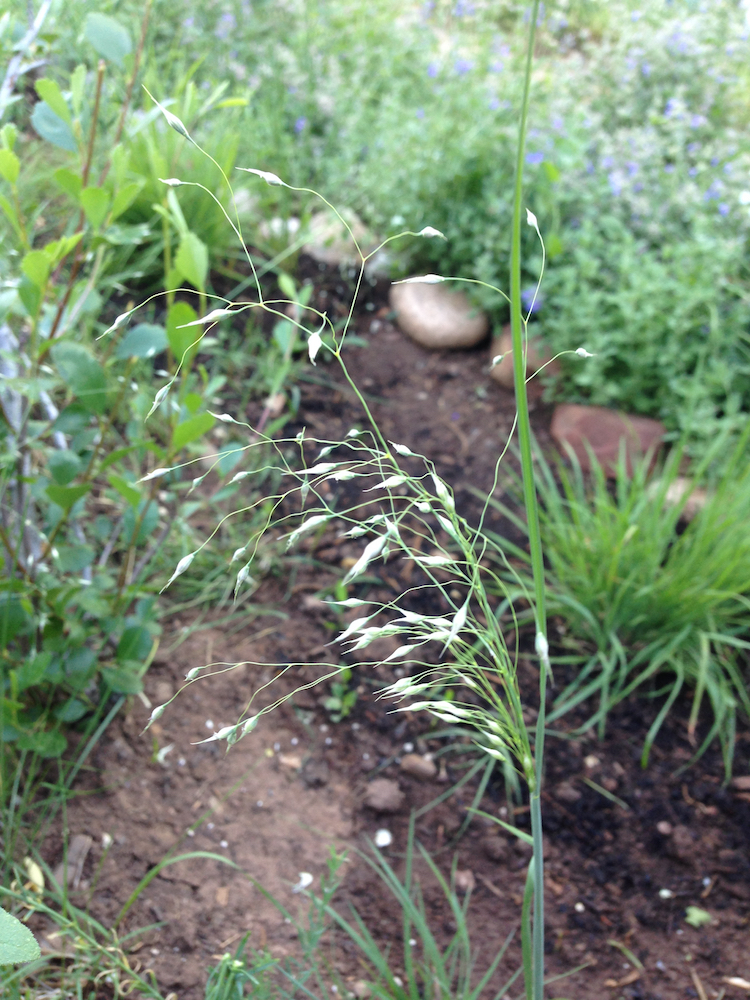Selected Plants of Navajo Rangelands
Ricegrass, Indian
Ndídlídii
(a.k.a. Oryzopsis hymenoides, Stipa hymenoides)

Indian ricegrass is a cool season, native bunchgrass with many tightly rolled, slender leaves growing from the base of the bunch. The nutritious seeds of Indian ricegrass have a long history as a staple food.
Indian ricegrass is highly palatable to livestock and wildlife. It is a preferred feed for cattle, horses, and elk in all seasons. It is considered a preferred feed for sheep, deer, and antelope in spring, and a desirable feed for sheep, deer, and antelope in late fall and winter. It reaches its peak production from mid-June through mid-July. It holds its nutrient value well at maturity.
Indian ricegrass is very winter hardy and has a broad climatic adaptation. It can be found at elevations from 2,000 to 10,000 feet. It grows best in areas with average annual precipitation of 8 inches to 14 inches.


Copyright 2018 New Mexico State University. Individual photographers retain all rights to their images. Partially funded by the Western Sustainable Agriculture Research and Education Program (westernsare.org; 435.797.2257), project EW15-023. Programs and projects supported by Western SARE are equally open to all people. NMSU is an equal opportunity/affirmative action educator and employer..
NMSU does not discriminate on the basis of age, ancestry, color, disability, gender identity, genetic information, national origin, race, religion, retaliation, serious medical condition, sex (including pregnancy), sexual orientation, spousal affiliation or protected veteran status in its programs and activities as required by equal opportunity/affirmative action regulations and laws and university policy and rules. For more information please read the NMSU Notice of Non-discrimination (opens in new window).

